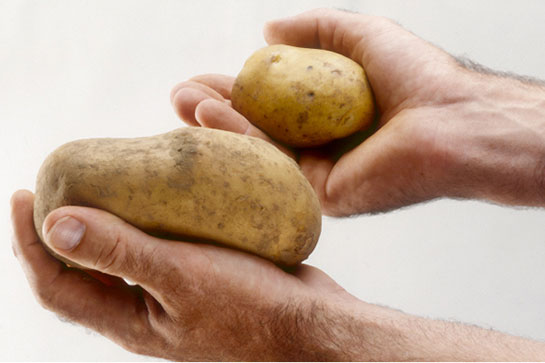What a difference half a year makes.
“Only six months ago, the markets in Europe were trading potato future contracts at above EUR 200 per ton, but now prices have come down to less than EUR 70 a ton (ex-farm). Huge fluctuations such as this have a big impact on contracted volumes, and processors must manage these risks throughout the supply chain, which leads to inefficiencies, not to mention financial challenges,” Mohammed Essa, the Blackburn, UK-based general manager for Aviko in the United Kingdom and Ireland, reported on June 20.
 “Externally, what we find is that during a market rise there are many who want to take a long term view. However, as soon as the market falls we find that some of those begin to have ‘itchy feet.’ Many customers frequently ask us whether it’s worth taking a long position, and if so, the duration,” he continued. “The honest answer is that there is never a right or a wrong time, you just have to make a judgment call based on the assessment of the information you have at any given time.
“Externally, what we find is that during a market rise there are many who want to take a long term view. However, as soon as the market falls we find that some of those begin to have ‘itchy feet.’ Many customers frequently ask us whether it’s worth taking a long position, and if so, the duration,” he continued. “The honest answer is that there is never a right or a wrong time, you just have to make a judgment call based on the assessment of the information you have at any given time.
“We have to realize the local and the macro factors shaping the world futures markets, such as rising global populations, fluctuating weather patterns and reduction of arable land. If historical data is anything to go by, then this clearly shows two market rises in the last four years alone. What is important is that once a judgment call is made, agreements are honored by all parties, managing rewards and risks collectively.”
Providing an update on the current crop situation, the agronomy department of Aviko at headquarters in Steenderen, Holland, first reminds those in the industry that the 2013 crop in Europe’s potato belt was late due to a severe winter and low temperatures that lasted until May. This meant that the so-called “early” harvest was not available until the second half of July.

The situation in the spring of 2014, however, was totally different. A winter without much frost or snow was succeeded by an early spring with relatively high temperatures in March and April. This enabled early plantings and resulted in a sooner than expected first crop. Planting conditions were ideal and growth developed well. A full two weeks earlier than normal, the fields of the main crop potatoes were closed.
The first estimates of acreage of the EU-5 countries predict an increase of approximately three percent, reported Aviko, which ranks as the world’s fourth largest producer of frozen potato products. This situation of slightly increased acreage also applies to the United States.
“The potato, as we all know, is a weather-dependant commodity, and with climate reports stating more and more extremes in weather conditions, it’s possible the main crop to be harvested in September and October could drown or dry out, resulting in moderate or top yields,” said Essa. “In that respect, June is far too soon to draw any conclusions about yields and prices of a crop that has a growing season of more than four months ahead.”





